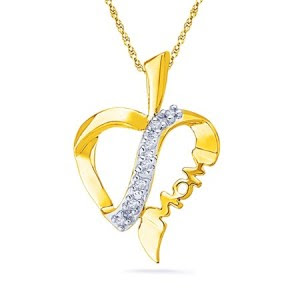GIVING JEWELRY A NEW LIFE
The
Duchess of Windsor once owned a valuable tiara that was too tight and
gave her headaches. And so it was sent to a New York craftsman, who
enlarged it invisibly, and the Duchess wore it without pain.
Tiara
repair is not a major concern in this country, but one jeweler
estimates that billions of dollars in necklaces, bracelets and rings are
languishing in bank vaults and bureau drawers because their owners
don't like them enough to wear or because they need repair.
''Women
have jewels they inherited or gift pieces they've never been happy
with,'' said Gerard Riveron, vice president of the Genevabased Eric
Bertrand Inc., jeweler and stone dealer. ''The stones may have increased
in value, but if the settings are old-fashioned or don't suit the
wearer, the jewelry may just lie around forgotten.'' Since one of the
specialties of his company is re-creating new designs using the
customer's own stones, Mr. Riveron shakes his head in regret at the
waste.
Bertrand,
on the third floor of the General Motors Building, sees clients by
appointment. Like many jewel remodelers, its designers will make
suggestions for remodeling and will do quick sketches initially, then a
colored drawing of the new piece in a few days. The customer should
allow four to five weeks for the finished work.
The
jewelry craftsman who enlarged the Duchess's tiara is Leopold Woolf,
who could be called a jeweler's jeweler. Stores often send him repair
work they can't handle themselves. He also does repairs and remodeling
for private clients. Trained in Vienna, he has been at his craft for 40
years and is a specialist in antique jewelry. He has restored Faberge
pieces and repaired old jewelry for the James Robinson shop.
Mr.
Woolf will replace lost stones, resize rings, lengthen or shorten
chains, repair catches, change earrings from clips to pierced-ear backs,
repair enamel and regild vermeil. He has turned cuff links into
earrings and mounted a narrow diamond bracelet on a wide gold cuff. The
other day he was working at one of his favorite tasks: rebuilding a
hinge on an unusual Victorian bracelet set with a rare cameo of a man's
head. He also appraises jewelry. Prices for resizing rings start at $20
and can go over $100, depending on the metal involved and if stones have
to be reset.
Leopold Woolf is at 22 West 48th Street, Room 1106; he prefers that
customers make appointments. The Madison Avenue shop called
Cravetz-Kahan will remodel and repair quality jewelry and is noted for
its work with pearls. It has a large inventory of pearls and therefore
can lengthen necklaces, but it can shorten or restring them as well. One
of its unusual remodelings was done for a woman who had inherited a
long rope of her grandmother's pearls: the shop turned the rope into a
three-strand choker and used the stone from an old emerald ring at the
center. Another specialty is using antique diamond pins - bow-shaped or
a small frog or an animal - as removable clasps for pearls. By
interspersing the pearls with gold or semiprecious beads, a necklace can
acquire a new look. Simple restringing can be done within a week, but
seed-pearl necklaces may take months. Restringing prices start at $25
and can go up to the hundreds.
Cravetz-Kahan, which also sells jewelry, is at 810 Madison Avenue (68th
Street). Allan Wander, vice president of Wander & Company, founded
by his grandfather, says his company can do just about any repair or
remodeling work, from resizing a ring to making an exact copy of a lost
earring. Its craftsmen have converted diamond bracelets into necklaces
by centering the bracelet and adding other stones or pearls to the back.
Earrings can be turned into rings and cuff links into earrings. A
collection of tie pins with the ends cut off can make an unusual brooch.
Lost or chipped stones can be replaced and jewelry cleaned or replated
(police officers bring in their badges to be replated with gold or
platinum). Wander also does watch repairs. Converting an earring into a
ring costs between $150 and $500.
Wander & Company is on the 14th floor of 745 Fifth Avenue (57th
Street). Sometimes the small neighborhood jeweler turns out to be a
trained craftsman and can do remodeling as well as repairs. Gerard
Zierler, on the Upper West Side, learned his trade in Argentina and does
all the work himself, rather than farming it out. One of his
commissions was turning the diamonds from a watch bracelet into a pair
of earrings, a job he did for $150. He repairs, lengthens or shortens
gold chains and changes the backings on earrings from clip to pierced.
Losing the small backing that holds pierced earrings is a common
problem, and Mr. Zierler has extras for sale, along with a good stock of
watchbands. The store is at 202 West 96th Street.
Most
of the large jewelers - Tiffany and Fortunoff, for instance - will
repair only jewelry that was originally purchased in their stores. Van
Cleef & Arpels and Cartier will remodel jewelry from other sources,
but only if the piece is of good quality. ''We mean genuine stones and
real gold or platinum,'' explains Henry Loeser, service director of
Cartier. ''If a woman has inherited fine jewelry she would like
remodeled, our designers can sketch out her ideas, and our workroom can
do the job.'' Mr. Loeser adds that Cartier can put new movements in
watches or convert them with quartz movements. Fees for new movements or
conversions range from $250 to $600.
A
word about watch repairs. The best way to find an expert for a watch is
to call or write the company that made it. Many of the good watch
companies have repair departments.




Comments